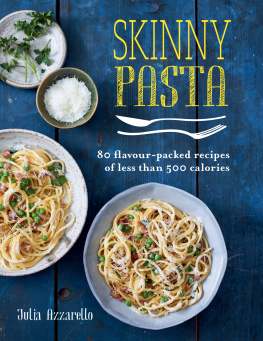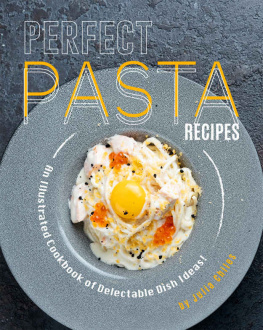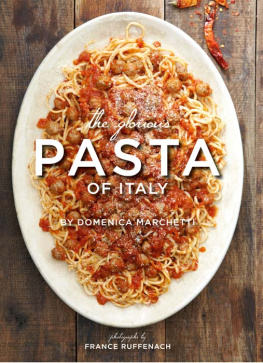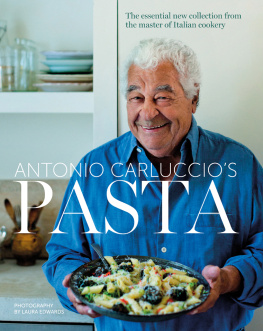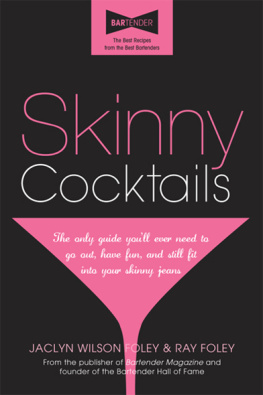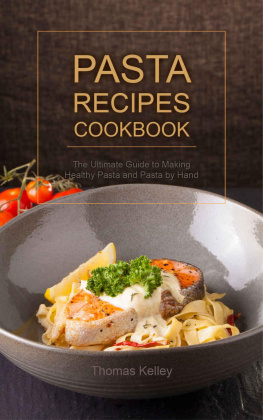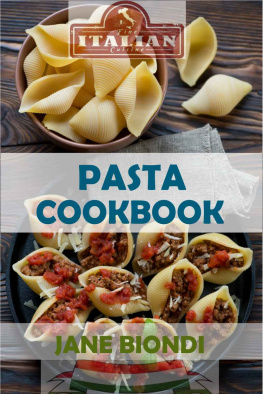Julia Azzarello - Skinny Pasta
Here you can read online Julia Azzarello - Skinny Pasta full text of the book (entire story) in english for free. Download pdf and epub, get meaning, cover and reviews about this ebook. year: 2019, publisher: Octopus, genre: Home and family. Description of the work, (preface) as well as reviews are available. Best literature library LitArk.com created for fans of good reading and offers a wide selection of genres:
Romance novel
Science fiction
Adventure
Detective
Science
History
Home and family
Prose
Art
Politics
Computer
Non-fiction
Religion
Business
Children
Humor
Choose a favorite category and find really read worthwhile books. Enjoy immersion in the world of imagination, feel the emotions of the characters or learn something new for yourself, make an fascinating discovery.
- Book:Skinny Pasta
- Author:
- Publisher:Octopus
- Genre:
- Year:2019
- Rating:4 / 5
- Favourites:Add to favourites
- Your mark:
- 80
- 1
- 2
- 3
- 4
- 5
Skinny Pasta: summary, description and annotation
We offer to read an annotation, description, summary or preface (depends on what the author of the book "Skinny Pasta" wrote himself). If you haven't found the necessary information about the book — write in the comments, we will try to find it.
Skinny Pasta — read online for free the complete book (whole text) full work
Below is the text of the book, divided by pages. System saving the place of the last page read, allows you to conveniently read the book "Skinny Pasta" online for free, without having to search again every time where you left off. Put a bookmark, and you can go to the page where you finished reading at any time.
Font size:
Interval:
Bookmark:





Picture yourself in a beautiful mountain town nestled between the Amalfi Coast and the city of Naples. Wander down the road a little and smell and feel the fresh, salty sea air mingling with the cool mountain breeze. Look up, and you will see rows upon rows of pasta drying on rods and over balconies in this lovely medieval village. Now wake up.
In the town of Gragnano, the pasta capital of Italy in the Campania region, this used to be the only way to dry pasta, but these days you will not find it drying on balconies. Its a romantic tale of pastas origins, which has become a favourite food throughout the world. Unfortunately, many who love pasta also fear it; with the rise of no-carb, low-carb, ketogenic and paleo(lithic) diets, pasta has become something of a dietary bogeyman.
In fact, pasta itself is not fattening, nor is it inherently bad for you. Italians have been eating it for centuries, and the Mediterranean diet is one of the worlds healthiest, emphasizing fruits, vegetables, nuts, little meat and dairy and good oils, such as olive oil. Paired with the right sauce, pasta makes a healthy, well-balanced dish.
I eat and cook with whole foods; no fat-free products or artificial sweeteners. Nor do I believe in following food trends, the latest of which include using charcoal, matcha (green tea noodles are delicious, but thats another book) or turmeric in everything. They all have their place like watermelon radishes but that place is just not in pasta. Classics are around because they have withstood the test of time like a pair of jeans worn with a crisp white shirt.
But the recipes in this book are not your Nonnas (grandmothers): they are lighter interpretations of classic Italian and European dishes and also less labour intensive, so you wont spend your day slaving over a saucepan of pork bones and tomatoes. Using only good-quality, flavourful ingredients, the calories are whittled down through clever swaps and portion sizes. Meat is used in moderation, or as an addition. Likewise, cream, butter and cheese are limited. These foods in themselves are not bad, it is only when they are consumed in extreme levels that they are harmful. Since most of us live busy lives, Ive mostly relied on canned beans and lentils, dried pasta and stock cubes, but if you have homemade stocks around, feel free to use them they will only enhance the flavour, especially in the soups.
Eating is one of lifes great pleasures. I have spent months eating pasta for dinner, lunch and snacks while writing this book and I can honestly say that I am not tired of it. With so many combinations, the possibilities are endless. It also connects us: a recipe can be passed from one generation to the next, remaining a classic or subtly tweaked into something new.
Youll discover how to make fresh pasta and homemade sauces, how to incorporate pasta into comforting soups and ways to serve scrumptious pasta starters. And, of course, there are also plenty of classic pasta main-course dishes that you will be able to enjoy without feeling as though you have used all your calories for a week in one sitting! These recipes will show you that your favourite pastas can be enjoyed, guilt-free. Life is too short not to eat pasta!
Read the recipe through and make sure you have all the ingredients in front of you before you commence cooking. I find it useful to prepare all my ingredients and place them in little bowls, ready to be cooked. The French call this mis en place and it is how great restaurants run so smoothly all the ingredients are ready from the start. Aim to have the pasta and sauce ready at the same time; for sauces that take longer to make, wait until your sauce is almost completely cooked before boiling the pasta.
Make sure you buy the best quality ingredients you can afford. It truly makes a difference buying well-raised chicken, beef and dairy. Buy local produce whenever you can, as it will be fresh and have had to travel fewer miles from the farm to your plate. Ive tried to limit sourcing ingredients to local shops and markets. Any obscure shapes of pasta can be purchased in your local Italian deli or online, or you can substitute a similar pasta shape.
Most of the recipes in this book are adaptable many can easily be made vegetarian or vegan by swapping or omitting the cheese, and any of the traditional durum wheat pastas can be swapped for gluten-free versions, of which there is now an abundance on the market. Quinoa, corn, rice, buckwheat, brown rice and amaranth are all gluten-free, though buckwheat is sometimes mixed with whole wheat, so check the label. The only ones I dont recommend are black bean and lentil pastas, because I find they have a very strange texture. It is a matter of experimenting to find one you like.
Use flaked sea salt, such as Maldon or Cornish, to season sauces, and coarse sea salt to flavour pasta water. I use 2 scant tablespoons to season pasta for a main course for 4, and half this quantity for starters. If Im cooking less than 100g (3oz) of pasta, I use 1 teaspoon of salt. Season the sauce in balance with the ingredients; if the recipe calls for capers and olives, for example, you will need to use less salt.
Pepper is best freshly ground. Fresh herbs are also preferrable, but you can easily substitute dried, just halve the quantity. Simiarly, you can substitute dried chilli flakes with fresh if you wish. To crush garlic, I chop the clove with a pinch of salt, then drag the side of a chefs knife back and forth until I have a paste. Although most chefs dont like them, you can use a garlic press instead if you wish.

Every shape of pasta has its purpose, depending on the sauce that its carrying. Italians take this very seriously, and would never serve spaghetti with meatballs or Bolognese for example as its too thin. A long flat pappardelle or a short tubular rigatoni holds the chunky sauce better.
Long, thin pasta
Examples: spaghetti, linguine, vermicelli
Best with: tomato, oil, creamy sauces, sauces that are not too chunky, seafood, pesto
Font size:
Interval:
Bookmark:
Similar books «Skinny Pasta»
Look at similar books to Skinny Pasta. We have selected literature similar in name and meaning in the hope of providing readers with more options to find new, interesting, not yet read works.
Discussion, reviews of the book Skinny Pasta and just readers' own opinions. Leave your comments, write what you think about the work, its meaning or the main characters. Specify what exactly you liked and what you didn't like, and why you think so.

